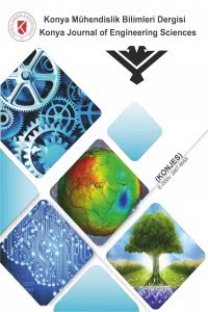Yeniden ürün değerlendirme yönetimi
Hammadde kaynaklarının gittikçe azalması, çöp sahalarının dolması, çevrenin giderek kirlenmesi ve tahrip olması tüketicilerin, üreticilerin ve yöneticilerin, dikkatini çevre konularına yöneltmiş ve çevre bilinçli üretim ve yeniden ürün değerlendirme yönetimini (ÇBÜYÜDY) zorunlu hale getirmiştir. Akademik ve endüstri çevrelerinde ÇBÜYÜDY ile ilişkili çözüm aranan problemler: ürünlerin hayat çevrimine ilişkin, kullanılmış ürünlerin ayrıştırılmasına ilişkin, malzeme ve ürünün yeniden değerlendirilmesine ilişkin ve kirliliğin önlenmesine ilişkin problemlerdir. Bu çalışmada, yeniden ürün değerlendirme kapsamında geri dönüşüm incelenmiş, ayrıca onarım, yenileştirme, yeniden üretim, parçalara ayırma ve geri dönüşüm kavramları açıklanarak, endüstrideki geri dönüşüm uygulamalarından bahsedilmiştir.
Product recovery management
Environmentally Conscious Manufacturing and Product Recovery (ECMPRO) has become an obligation to the environment and to the society itself, enforced primarily by governmental regulations and consumer perspective on environmental issues. This is mainly driven by the escalating deterioration of the environment, e.g. diminishing raw material resources, overflowing waste sites and increasing levels of the pollution. ECMPRO related issues have found a large following in industry and academia who aim to find solutions to problems that arise in this research area. Problems are widespread including the ones related to life cycle of products, disassembly, product recovery pollution prevention. In this paper, we consider product recovery options, these are: repair, refurbishing, remanufacturing, cannibalization, and recycling. Then we mention about the recovery practices in industry.
___
- Güngör, A., Gupta, S.M., 1999, Issues in environmentally conscious manufacturing and product recovery: a survey, Computers and Industrial Engineering, 36, 811-853.
- Hattori, M., Nomura, N., Sommer,D., and Inoue, H., 1995, Fundamentals of environmentally conscious design, International Journal of Environmentally Conscious Design and Manufacturing, 4,1,3-11.
- Kamei, T., and Miyadera, H.M., 1995, Product life-cycle of electrical appliances, International Journal of Environmentally Conscious Design and Manufacturing, 4,1,43-63.
- Kazuo, T., 1995, A concept of a robotic disassembly system for disused products, International Journal of Environmentally Conscious Design and Manufacturing, 4,1,91-97.
- Miettinen, S., Hamalainen, RP., 1997, How to benefit from decision analysis in environmental lifecycle assessment, European Journal of Operational Research,102,2, 279-94.
- Lund, R.T., 1984, Remanufacturing. Technology Review, 87,2,19-9.
- Nasr, N, 1997, Environmentally conscious manufacturing. In: Careers and the Engineer, 26- 27.
- Owen, J., 1993, Environmentally conscious manufacturing. Manufacturing Engineering, 4,44-55.
- Pohlen, T.L., Farris I I M.T., 1992, Reverse logistics in plastics recycling, International Journal of Physical Distribution & Logistics Management, 22,7,35-47
- Sadahikoyokoyama and Masatohi Iji, 1993, Recycling of printed wiring board waste, Proceeding of the 1993 IEEE, Tsukuba International workshop on Advanced Robotics, Tsukuba, Japan, November 8-9, 55-58.
- Staff ,W., 1998, "Recycling Practices in the Automobile Industry", Techno Japan, 11, 20-29.
- Sullivan, J.L. and Young, S.B., 1995, Advanced Materials &Processes,147,2,38.
- Thierry, M., Salomon, M., Nunen, J.V. and Wassenhove, L.V., 1995, "Strategic Issues in Product Recovery Management", Calif. Mgm. Rew., 37,114-135.
- Watkins, R.D., and Granoff, B., 1992,Introduction to Environmentally conscious manufacturing, International Journal of Environmentally Conscious Design and Manufacturing, 1, 1,5-11.
- William, D.C., 1995, Materials Science And Engineering: An Introduction, 4.ed., New York: John Wiley&Sons.
- ISSN: 1300-5200
- Yayın Aralığı: Yılda 4 Sayı
- Başlangıç: 2018
- Yayıncı: -
Sayıdaki Diğer Makaleler
Sürtünme kuvvetinin yüzeyaltı çatlak ilerlemesi üzerindeki etkisinin araştırılması
Kubilay ASLANTAŞ, Süleyman TAŞGETİREN
Konya'da ilk apartman örnekleri
Doğanşehir (Malatya) civarındaki ofiyolitik kayaçların jeolojik ve petrografik özellikleri
Kırılma katsayısı ve ölçü ağırlıklarının trigonometrik nivelman dengelemesine etkisi
Ergun KARACAN, Ahmet Turan ARSLAN
Yeniden ürün değerlendirme yönetimi
Elazığ evsel atıksu arıtma çamurlarında organik madde içeriğinin ve C/N oranının belirlenmesi
Ubeyde İPEK, Erdal ÖBEK, Halil HASAR, PINAR TATLI SEVEN, Berrin ÇINARCI
Grup teknolojisi hücresi oluşturmada yapay sinir ağı modellerinin analizi
